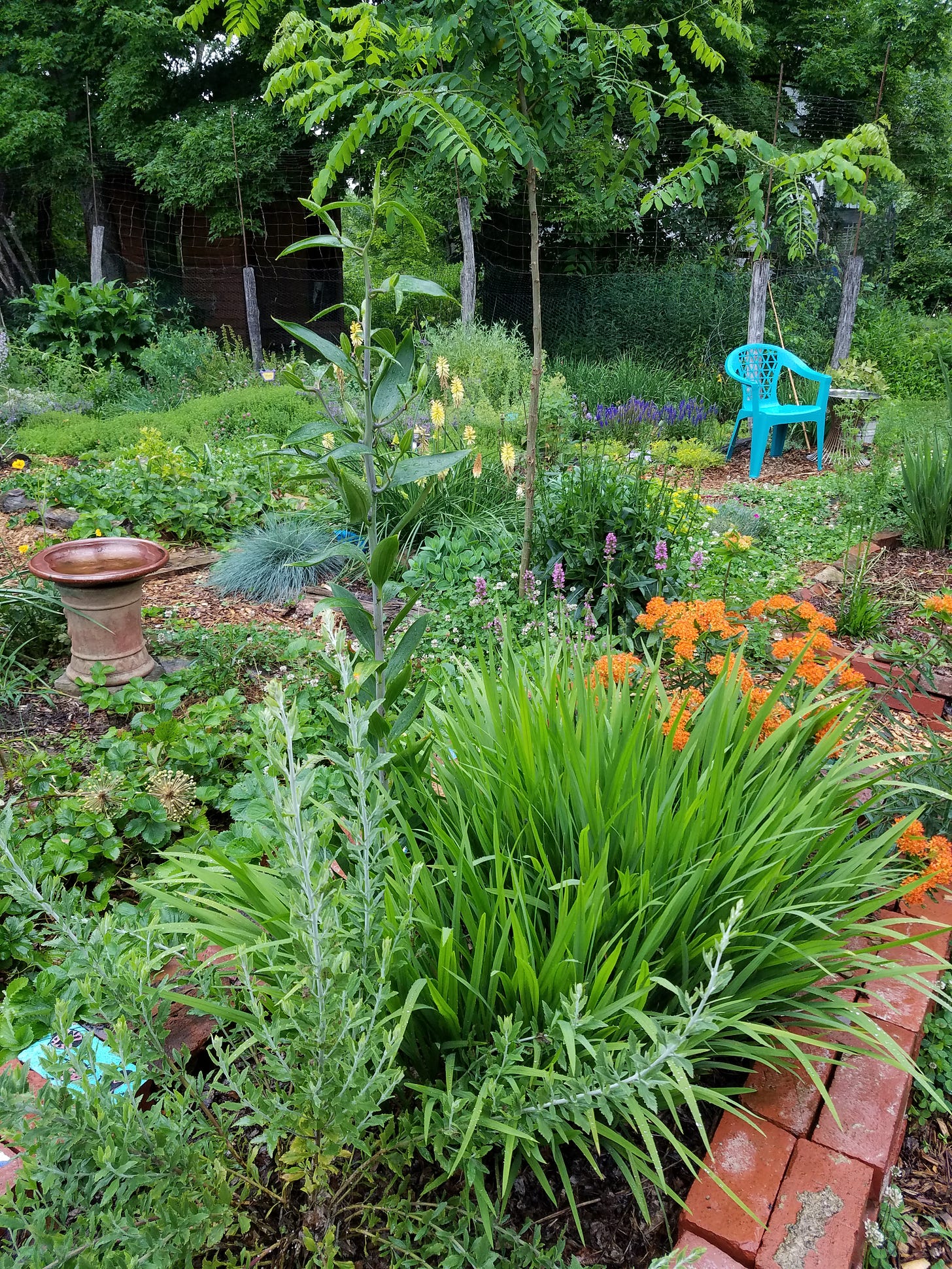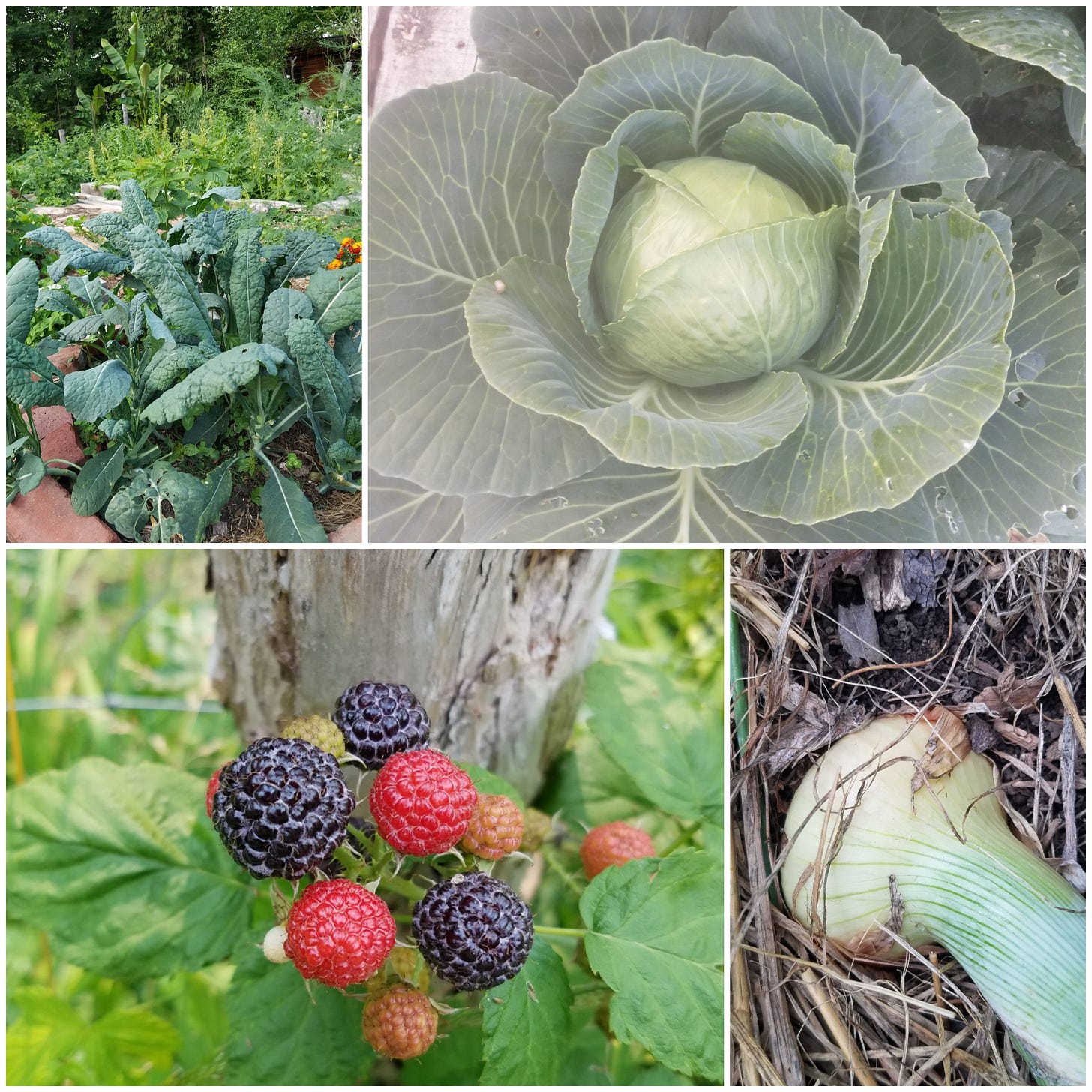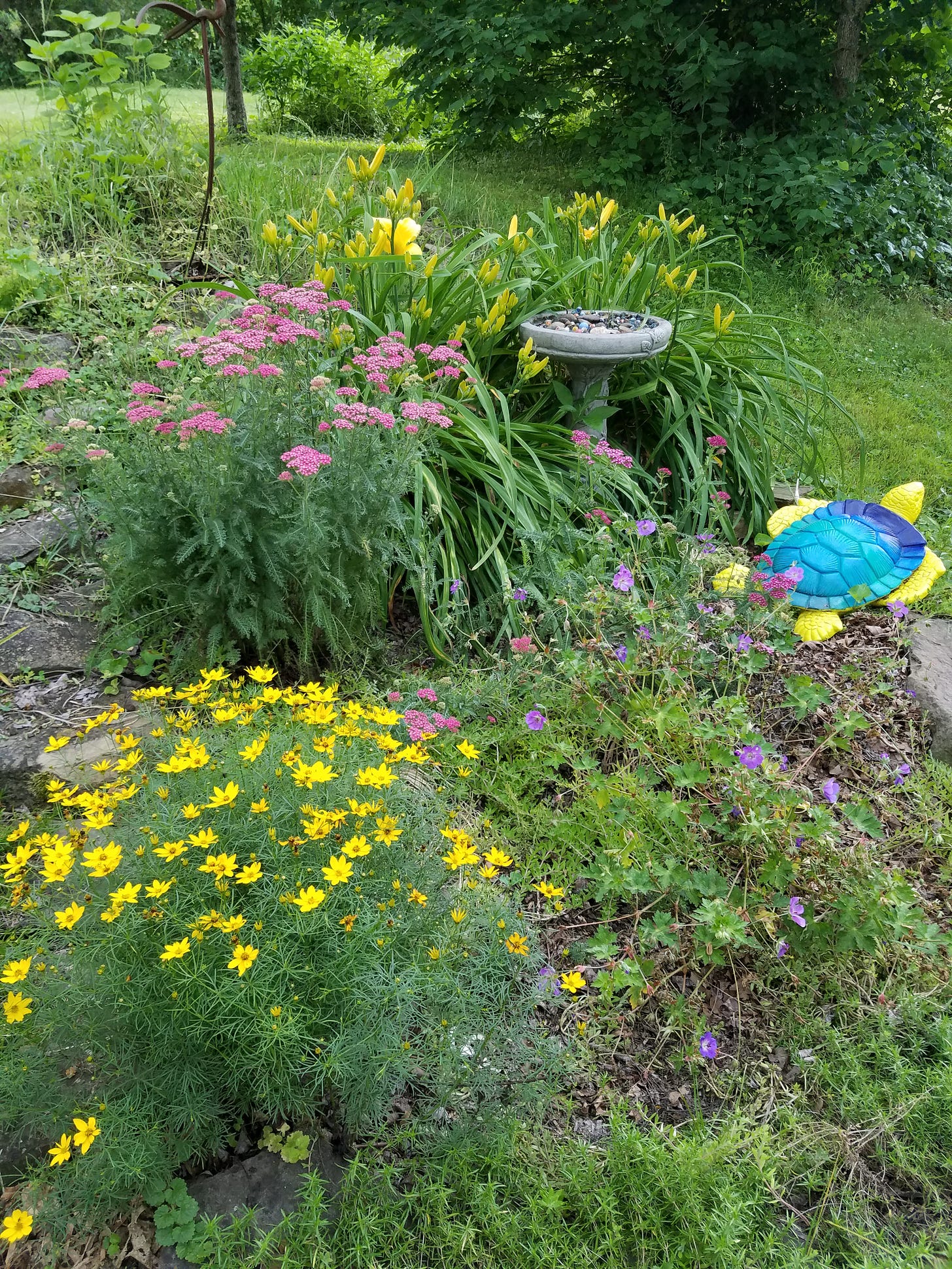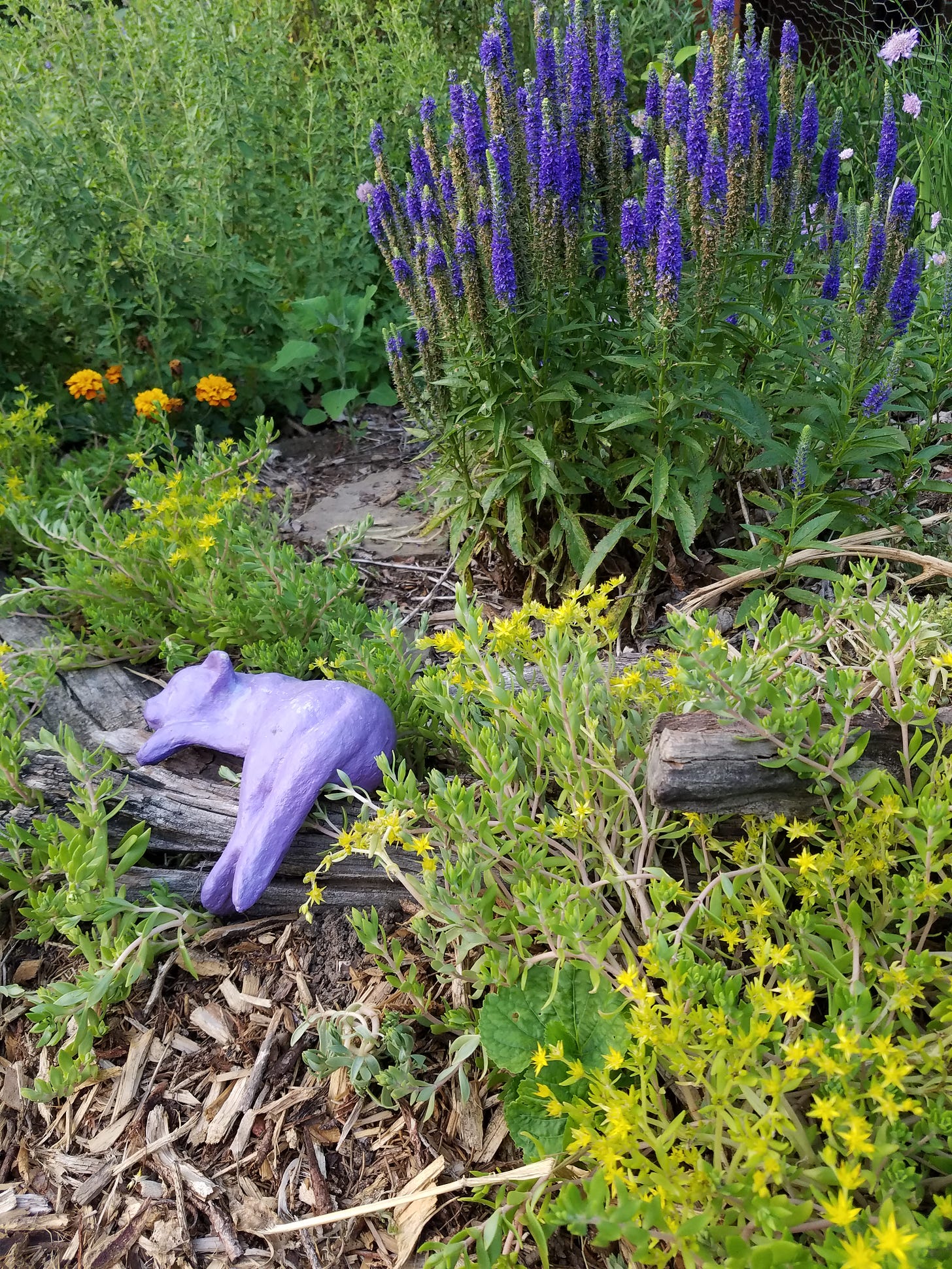The garden is magnificent this year despite cool temperatures, three weeks without rain during crucial early days, and an Asian jumping worm infestation. According to internet hearsay, these pests will eventually destroy the biosphere by eating it and pooping out hydrophobic turds incapable of sustaining life. I have no empirical evidence to refute this claim, but offer the potager as anecdotal rebuttal.
Though they look quite mature, my main ornamental beds have come together only in the last few years. The advantage of highly amended soil is that plants settle in and take off quickly, creating full beds, bursting with growth. The takeaway: Never stop working on building your soil.
Food-producing plants are going gangbusters as well. We're stuffing ourselves with black raspberries, and have been harvesting kale, cabbage, onions, and garlic scapes.
It's a joy to be out in the yard right now due to the lower-than-average temperatures and frequent cloud cover. While we've experienced some very hazy days, the Mid-Ohio Valley has escaped the worst of the smoke from Canadian wildfires, with only a few days with noticeable smoke at ground level. Warnings have been issued for those with respiratory ailments, but the particulates aren't causing discomfort for most of us.
The carbon reductionist narrative of the role of climate change in the Canadian wildfire events is on full display. My feeds are full of articles blaming a warming planet for the fires, with little mention of other factors. That landscapes are much drier now than in the past because of land use practices, the disruption of the small watercycle due to same, and the differences between forests that historically grew in these areas versus today's growth are not discussed. For an interesting take on the subject: https://lachefnet.wordpress.com/2023/06/09/beyond-hoax-and-apocalypse/
How different would we feel if, instead of hearing only about how many tons of carbon have been released by the fires, we were told how many black bears, tamarack trees, and lynx had gone up in smoke?
Though it's hard to imagine our lush valley ever burning, there may come a day when the risk of wildfire is real here. How would the land fare? I like to think our efforts at promoting a cool, shaded, and fully hydrated landscape mean less chance of, and quicker recovery from, future fires.
Wildlife sightings are up here on the farm. I'll share some photos of what we've seen next time.













What a beautiful garden that's teeming with life!! I'll be pondering how to get a megaphone for this question: "How different would we feel if, instead of hearing only about how many tons of carbon have been released by the fires, we were told how many black bears, tamarack trees, and lynx had gone up in smoke?"
"How different would we feel if, instead of hearing only about how many tons of carbon have been released by the fires, we were told how many black bears, tamarack trees, and lynx had gone up in smoke?" So true. I remember this Australian dude I talked to during the horrible Australian wild fires of a couple years ago when we were seeing burning koalas on TV. "Why is everyone so excited?" he said. "There aren't any humans in there. It's all just brush." I wasn't allowed to argue with him. He was a customer, but the callousness of so many people when it comes to nature may well end up being the biggest crime (among many) of the human race.